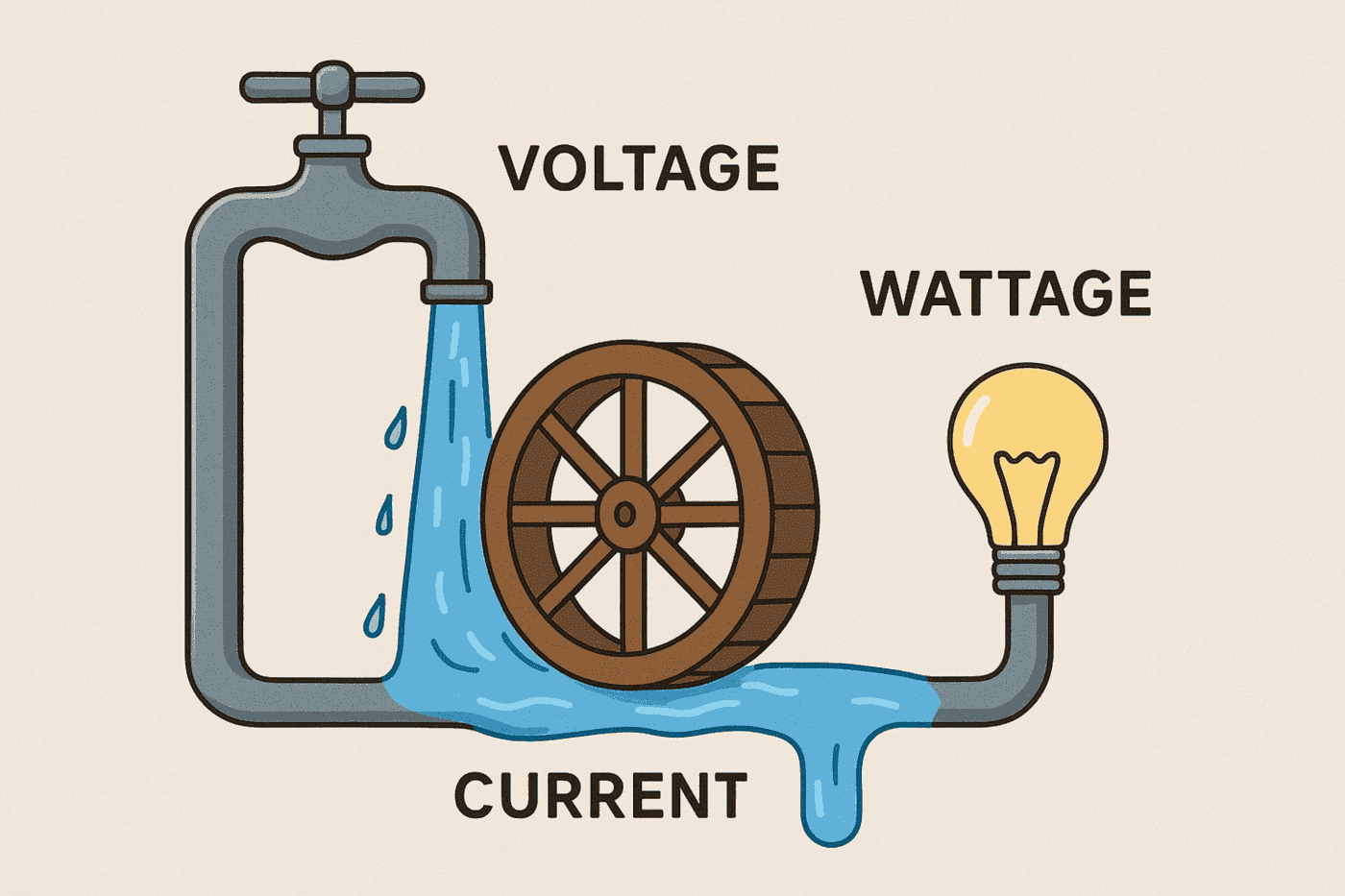
%20(1).jpg)
Figuring out the exact components required for a solar power setup can feel overwhelming. Many individuals wind up investing significant money yet still lack adequate power for their requirements. Common mistakes occur frequently (connecting a panel directly to an automobile battery won't deliver results).
Large financial investments aren't mandatory if your budget is limited. However, grasping fundamental concepts is essential. The challenge lies in finding reliable information about compact off-grid solar installations; it's surprisingly scarce or unnecessarily complicated. This straightforward guide breaks down affordable, small-scale solar setups to clarify the often murky world of solar energy systems.

1. Solar Panels
These capture sunlight and convert it into usable energy. Higher efficiency panels generate more power from the same amount of sunlight.
Two primary panel varieties dominate the market: monocrystalline (appearing black) and polycrystalline (displaying blue or dark blue coloring). Ongoing discussions continue regarding which performs better, and those interested can explore renewable energy fundamentals through the Union of Concerned Scientists for comprehensive technical comparisons.
2. Battery Storage
Batteries preserve the electricity gathered by your panels. Greater storage capacity means extended power availability during periods without sunlight.
Avoid automobile batteries! These are engineered for completely different purposes (delivering brief, high-power bursts to start engines). Deep cycle batteries are what you require, and pricing continues to become more affordable, welcome news for solar adopters.
Another decision awaits: Lead acid? Gel? Lithium? All three work in solar applications, though lithium currently outperforms the alternatives while carrying a premium price tag. When planning your off-grid solar system design, battery selection becomes crucial for long-term performance.
3. Charge Controller (Regulator)
This device functions as your system's management center. Battery lifespan drastically decreases when overcharged or excessively drained. The controller manages charging levels for your batteries. Once they achieve optimal capacity (typically around 14V), the regulator prevents additional power flow from the panels. Understanding solar rapid shutdown requirements helps ensure your controller meets current safety standards.
4. Power Inverter
Batteries output electricity at 12V. The inverter transforms this 12V current into voltage appropriate for standard household devices (generally 220V or similar). Proper wire management and conduit practices ensure safe inverter installation and optimal system performance.

You've assembled your fundamental solar power components. That's excellent progress. Problems emerge, however, when attempting to run devices requiring more electricity than your setup can deliver. Basic electrical knowledge proves invaluable here.
Volts = The electrical equivalent of water pressure. Higher voltage pushes more electrical current through the system.
Amps (current) = The rate at which electricity flows.
Watts = The measurement units for electrical power.
Voltage multiplied by amps equals watts.
Understanding these relationships is essential for residential solar design and helps prevent costly sizing mistakes. The Center for Climate and Energy Solutions provides valuable context on renewable energy metrics and standards.
Here's how an actual budget DIY solar system breaks down. This setup included two 160-watt solar panels, two 200 AH batteries, a 600-watt inverter, and a 20-amp regulator. But what do those numbers mean for everyday use?
1. Inverter Limitations
We couldn't operate any single device or combination of devices exceeding 600 watts. The inverter lacked the capacity (staying below approximately 300 watts proved wiser). Understanding solar three-line diagrams helps visualize how power flows through your system and identifies bottlenecks.
2. Regulator Constraints
We couldn't run any device or group of devices drawing more than 20 amps. The regulator couldn't manage higher loads. IEEE Power & Energy Society offers technical resources on proper system sizing and electrical load management.
3. Battery Storage Boundaries
Batteries hold a limited amount of stored energy. For optimal battery longevity, the system operated between 10.5 and 14.5 volts. This provided a 4-volt working range when the panels weren't capturing sunlight. Regional solar radiation data from the World Resources Institute helps predict realistic daily power generation.
Essentially, devices consuming under 50 watts became my target appliances. Generally speaking, compact motors and battery chargers received approval. Conversely, heating elements devour power aggressively.
For those ready to build your own home solar power system, this appliance list provides realistic expectations for small-scale installations. ENERGY STAR offers guidance on energy-efficient appliances that work well with solar systems.
Before installing any solar system, it's important to understand what happens if you install solar panels without proper permits, as this can lead to costly complications and safety hazards.
Understanding solar power doesn't require an engineering degree, just a grasp of the fundamentals. By knowing the four essential components (panels, batteries, charge controller, and inverter) and how electrical measurements work (volts, amps, and watts), you're already equipped to design a functional off-grid system.
Start small if you're on a budget. A modest setup can power essential devices like LED lights, laptops, phone chargers, and small appliances. Avoid power-hungry heating elements initially, and remember that your system's capacity is determined by your weakest component, whether that's your inverter's wattage limit, your regulator's amp capacity, or your battery storage.
The beauty of solar systems lies in their scalability. Begin with basic equipment, learn how your energy consumption patterns work, then expand gradually as needs and budget allow. Whether you're living off-grid, preparing for emergencies, or simply reducing electricity bills, solar power offers accessible, renewable energy independence without requiring massive upfront investments.
For commercial solar design projects, professional planning becomes essential due to stricter building codes and utility interconnection requirements. The REN21 Global Status Report tracks worldwide renewable energy adoption trends and emerging technologies.
Understanding solar supply-side connections ensures your system integrates safely with existing electrical infrastructure. The World Bank's energy resources provide global perspectives on renewable energy accessibility and financing.
The sun provides free energy daily, now you know how to capture it. Ready to take the next step? Explore Solar Permit Solutions' comprehensive services or contact our expert team for personalized guidance on your solar journey.
Can I use regular car batteries for my solar power system?
No, car batteries are unsuitable for solar applications. Automotive batteries are designed to deliver short, powerful bursts of energy to start engines, then quickly recharge. Solar systems require deep cycle batteries that can discharge slowly over extended periods and handle repeated charge-discharge cycles without degradation. Using car batteries in solar setups will result in rapid battery failure and poor performance. Invest in proper deep cycle batteries—lead acid, gel, or lithium—specifically designed for solar energy storage. The UN Environment Programme offers research on sustainable energy storage solutions.
How do I calculate what size solar system I need?
Start by listing all appliances you plan to use and their wattage ratings (found on labels or manuals). Multiply each appliance's wattage by the hours you'll use it daily to get watt-hours. Add these together for your total daily consumption. Your solar panels should generate 20-30% more than this to account for inefficiency and cloudy days. For example, if you need 1,000 watt-hours daily, aim for panels producing 1,200-1,300 watt-hours. Your battery bank should store 2-3 days' worth of power for backup during low-sunlight periods. Following our complete guide to solar permit applications ensures your system sizing meets local code requirements and utility standards.
What's the difference between a charge controller and an inverter?
A charge controller (regulator) manages power flowing from solar panels to batteries, preventing overcharging and over-draining that damages battery life. It monitors voltage levels and stops charging when batteries reach capacity (typically around 14V). An inverter converts the DC power stored in batteries (usually 12V) into AC power (typically 220V) that household appliances require. Think of the controller as your system's safety manager and the inverter as your power translator. Both are essential, but they perform completely different functions. Climate data from NOAA helps predict solar generation patterns for accurate system sizing.
Heating devices, toasters, space heaters, hair dryers, and electric kettles consume enormous amounts of power, often 1,000-2,000+ watts. A small solar system with a 600-watt inverter simply cannot supply this demand. Even larger systems struggle because heating appliances drain batteries rapidly. For example, a 1,500-watt space heater running for just one hour consumes 1,500 watt-hours, potentially depleting an entire day's solar collection. For off-grid living, use propane or other fuel sources for heating and cooking instead of electricity. Understanding solar permitting requirements helps ensure your system design accounts for realistic power loads and local regulations.
Battery lifespan depends on type and usage. Lead-acid batteries typically last 3-5 years with proper maintenance and careful charge management. Gel batteries extend this to 5-7 years. Lithium batteries, while more expensive upfront, can last 10-15 years or longer. Lifespan dramatically decreases if batteries are regularly overcharged, deeply discharged below safe levels, or exposed to extreme temperatures. A quality charge controller protecting your batteries from voltage extremes is your best investment for maximizing battery longevity. Regular monitoring and staying within recommended voltage ranges (typically 10.5V-14.5V for 12V systems) will help you get maximum life from your battery bank. SolSmart resources provide local guidance on solar system maintenance and optimization strategies. For more insights, visit our solar blog or reach out to Solar Permit Solutions for expert assistance.
We are dedicated to providing top-notch solar permit services to homeowners, business owners, DIY, and solar installers. Contact us today.